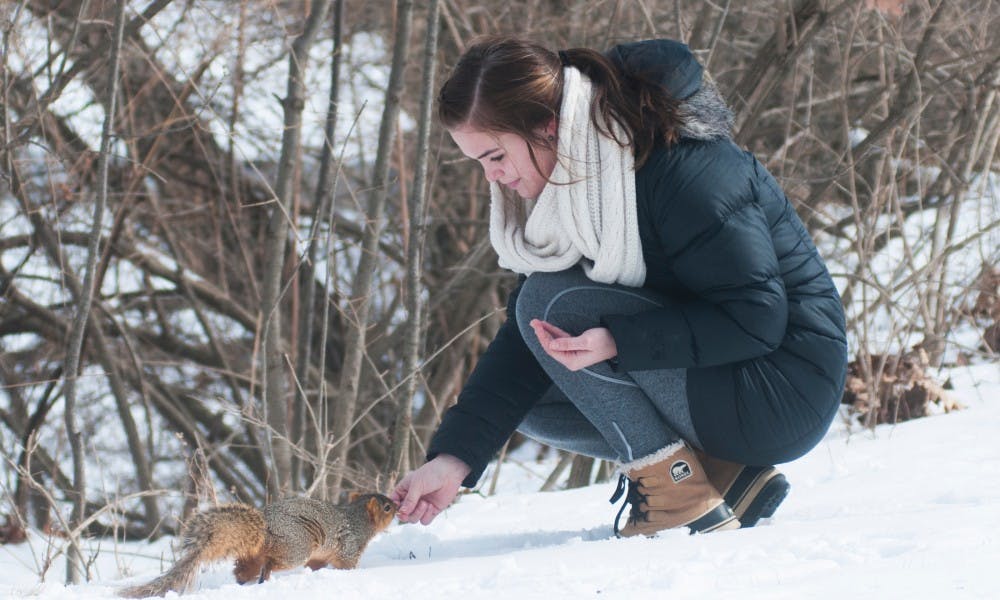What started as an experiment to see if a squirrel would eat peanuts out of her hand, turned into an ongoing friendship between interdisciplinary studies in social science and education sophomore Megan Feeley and various squirrels around campus.
“They bring me joy,” she said. “It’s like seeing a dog. I like squirrels.”
This love for squirrels began when she arrived at MSU last year.
After successfully feeding peanuts from the cafeteria to squirrels with some friends, she grew more interested in the creatures.
Feeley said she sometimes spends between 30 and 40 minutes feeding and bonding with the animals.
They are very skittish, so it takes a while for them to feel comfortable with a person. But if you are patient, the squirrels will approach, Feeley said.
Many other students also enjoy bonding with and observing the squirrels.
Nine MSU students are part of a Facebook group called the MSU Squirrel Watching Club. Though this group doesn’t actually have arranged meetings, they post anything from stories about squirrels to funny pictures they take and find.
One member of the club, economics graduate student Andy Chou, said he enjoys observing the squirrels more than actually interacting with them.
Chou never feeds the animals because he doesn’t believe directly interacting with wildlife is healthy for the animals, he said.
Dr. John Koprowski, the director of the Conservation Research Laboratory at the University of Arizona who does research on rare tree squirrels, recommends this behavior.
Feeding a squirrel leads to a squirrel’s reliance on this food source, Koprowski said.
Koprowski said if one is looking to feed squirrels, he or she should be committed to it, or only do so for a short period of time.
The squirrels will grow accustomed to the food they’re being fed and if that food source disappears, they might not know how to find a new one, Koprowski said.
Depending on what a person feeds a squirrel, this also might hurt them. Squirrels need to get a certain amount of nutrients and oftentimes people feed squirrels non-natural food items.
This results in the animal not receiving the right amount or diversity of nutrients. Sunflowers, for example, are rich in some nutrients, but if fed in large quantities to squirrels they can lead to physical maladies and bone issues for squirrels, Koprowski said.
Koprowski said feeding squirrels also puts a person at risk of being bitten and of catching diseases.
If a person still hopes to provide squirrels with food, he recommends doing it in a natural way.
He suggests planting things that will act as natural feeders.These include bushes that produce flowers, berries, seeds or nuts.This establishes a long-term food source for the squirrels.
Koprowski said he greatly enjoys watching squirrel behavior. His squirrel-watching hobby began when he was growing up.
Support student media!
Please consider donating to The State News and help fund the future of journalism.
Koprowski said watching squirrels is an easy way to get children interested in wildlife.
“They’re great to show kids and get them interested in the natural world,” Koprowski said. “I grew up in Cleveland, Ohio, and that’s how I became interested. (It) was just seeing squirrels in the backyard, at the local park and that kind of thing.”
Discussion
Share and discuss “Students, conservation expert weigh in on feeding squirrels ” on social media.







